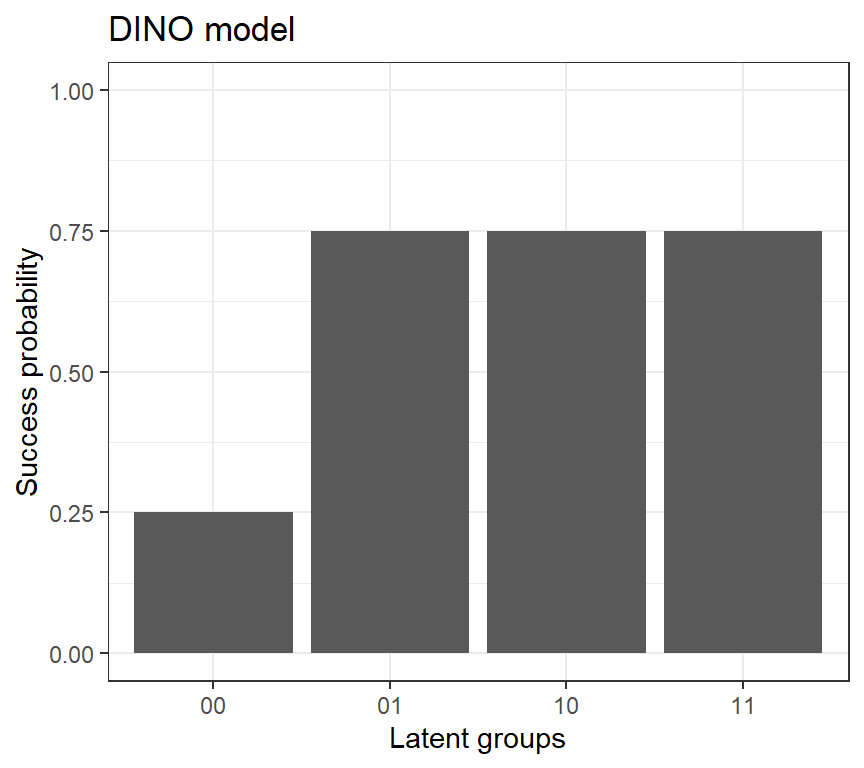3.6 The DINO model
Stands for the deterministic input, noisy “or” gate model (Templin & Henson, 2006)
Item j splits the examinees in the different latent classes into two groups:
those who have at least one of the required attributes \((\zeta_{jl} = 1)\)
those who have none of the required attributes \((\zeta_{jl}=0)\)
The IRF of the DINO model can be written by
\[ P(Y_{j}=1|\eta_{jl})= \begin{cases} g_j & \text{if $\zeta_{jl}=0$ }\\ 1-s_j & \text{if $\zeta_{jl} = 1$} \end{cases} \]
The DINO model has only two parameters per item regardless of the number of attributes \(K\):
guessing parameter
slip parameter
Please find the parameters from the plot below:

References
Templin, J. L., & Henson, R. A. (2006). Measurement of psychological disorders using cognitive diagnosis models. Psychological Methods, 11(3), 287–305. https://doi.org/10.1037/1082-989X.11.3.287